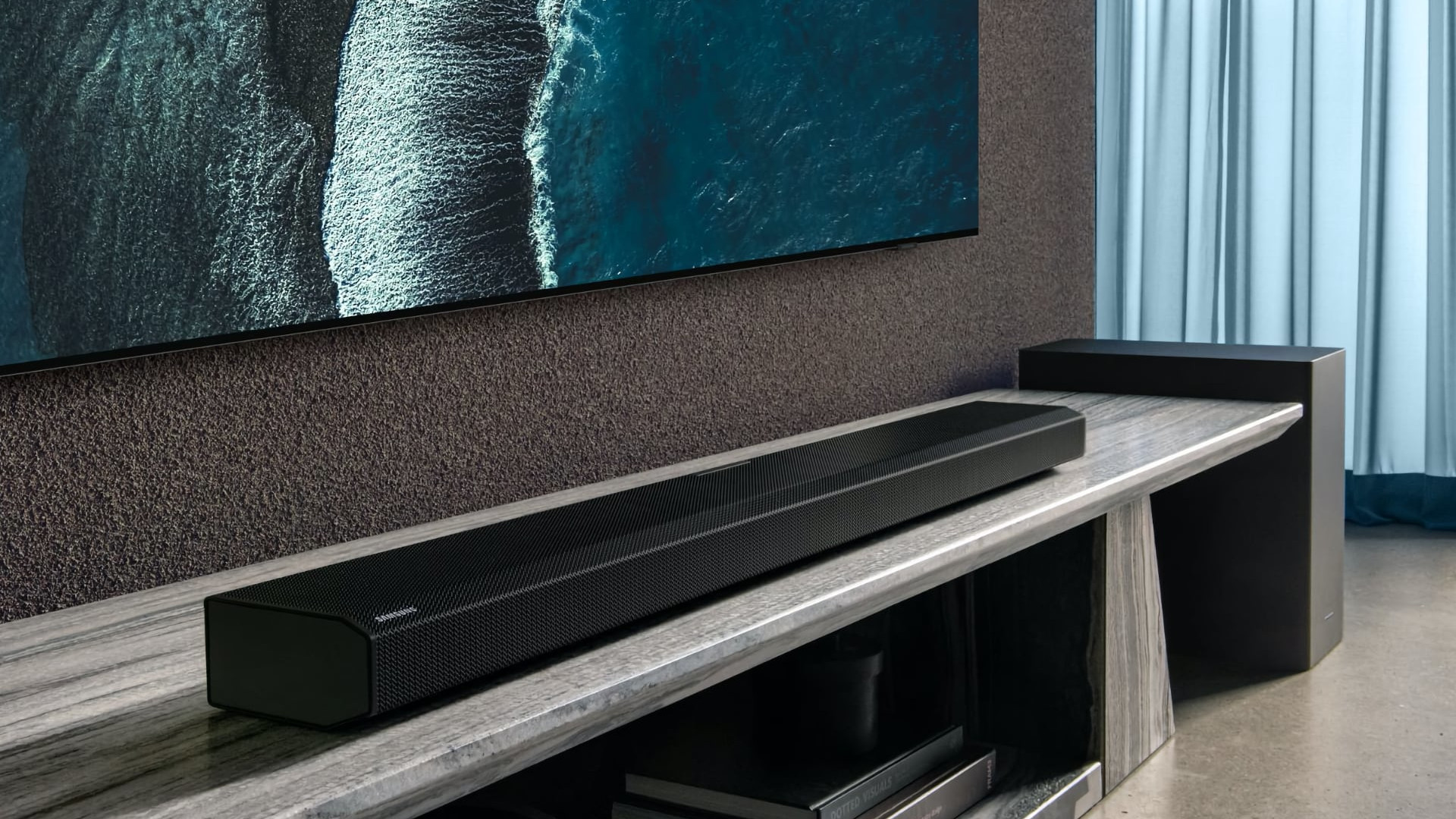
As Tech Editor at T3, I spend a lot of time reviewing, commissioning and editing the latest soundbar reviews – and have been doing so for over a decade within the industry. Here, I've rounded up the best soundbars specifically for Samsung TVs – collated from T3's in-house staff reviews and long-time freelancers' expert contributions. The best pick right now? It's Samsung's own Q990D system.
With Samsung-specific features, such as Q-Symphony to sync soundbar and TV speakers, I know the latest standards that make certain soundbar packages even better for Samsung's latest TVs. So read on for a more detailed analysis of which soundbar is best suited to your budget and feature wants – and I've put some jargon-buster explainers, buying advice tips, and more on T3's testing processes further down the page.
The long and short of it is simple: picking up one of the best soundbars for Samsung TVs will seriously enhance the set's audio output. While Samsung offers some of the best TVs on the market, which are usually fitted with decent speakers of their own, TVs are only getting slimmer – and that typically means the integrated audio suffers.
The soundbars I’ve selected in this comprehensive round-up – there are six in total, selected from a much wider pool of dozens that we've reviewed over the years, with prices ranging from around £250 to £1400 – offer a range of features and benefits, including Dolby Atmos surround sound, support for eARC, and more. The higher-priced packages tend to feature additional channels and additional speakers for a more immersive surround setup.
T3's Top 3
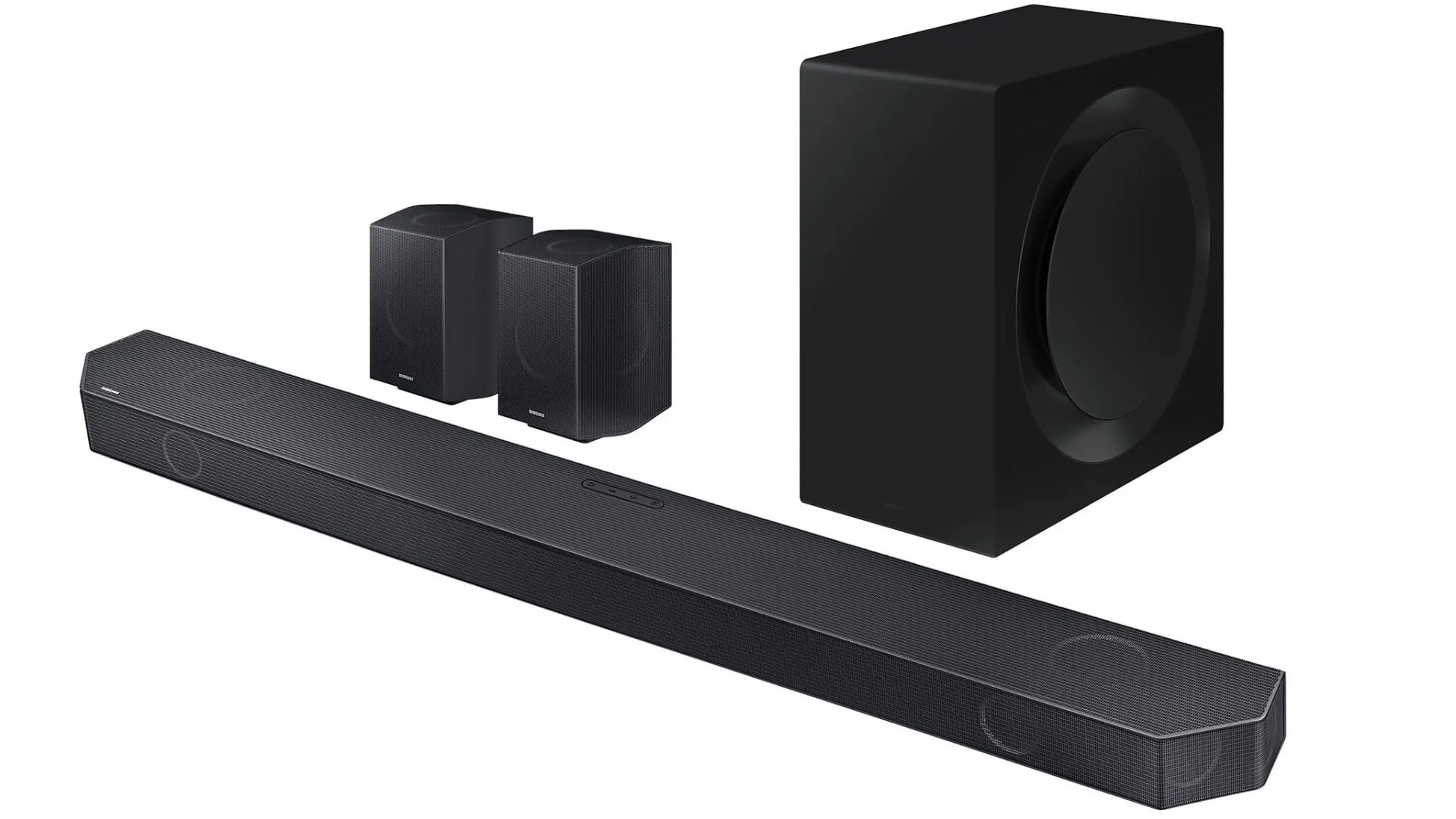
This soundbar, sub and speaker combo delivers immersive audio without compromise – and with a Q-Symphony TV it's unbeatable.
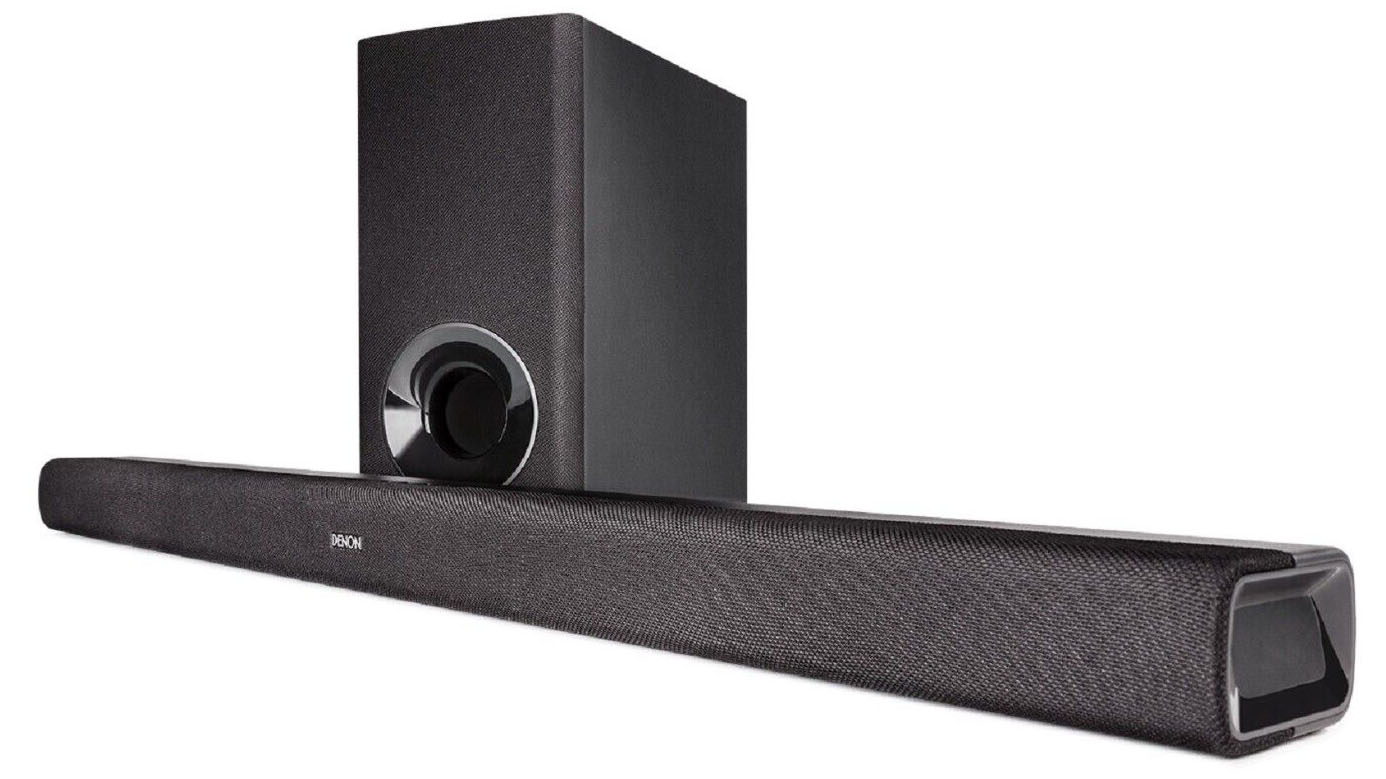
Denon's DHT-S316 main recommendation is on a price basis, as this 'bar-and-sub combination really stands out in terms of value for money.
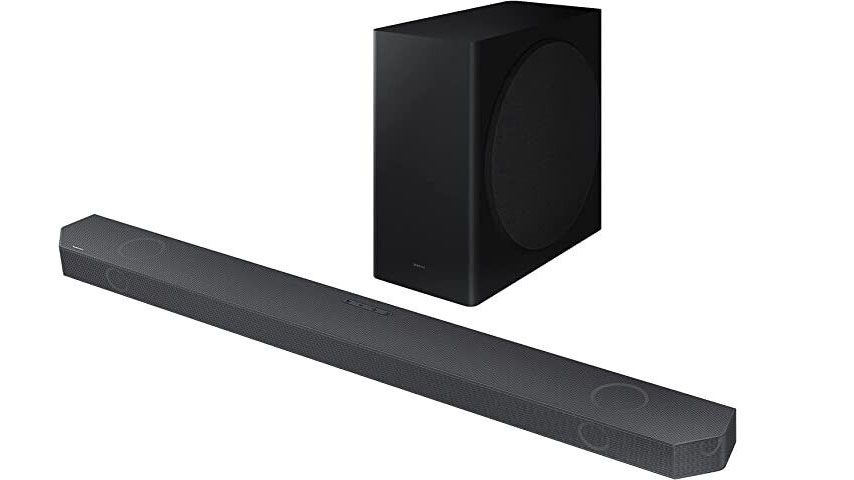
This soundbar-and-subwoofer two-piece combo remains relatively affordable, while offering near-to-flagship levels of performance.

Mike is Tech Editor for T3, covering core tech from TVs to audio, including soundbars but of course. He's been doing this for over 12 years now, having watched (and heard) the industry grow for the better – and see separates systems be overtaken by single-box and simpler surround solutions.
Update 21 February 2025: Included 'Honourable Mentions' section of additional alternative buys. Update 5 Feb: 1. Acknowledged Samsung's new Q990F – which has a smaller subwoofer – but confirmed that the Q990D is still best buy at this time. 2. Recognise the Sonos Arc Ultra as a new option – but, due to its lack of HDMI port, suggest the original Arc is still the better buy, while stocks last. 3. Reduced list to a top six. Update 3 October: Refresh to FAQs in advance of Amazon Big Deal Days commencing.
The best soundbars for Samsung TVs 2025
Best premium soundbar for Samsung TVs
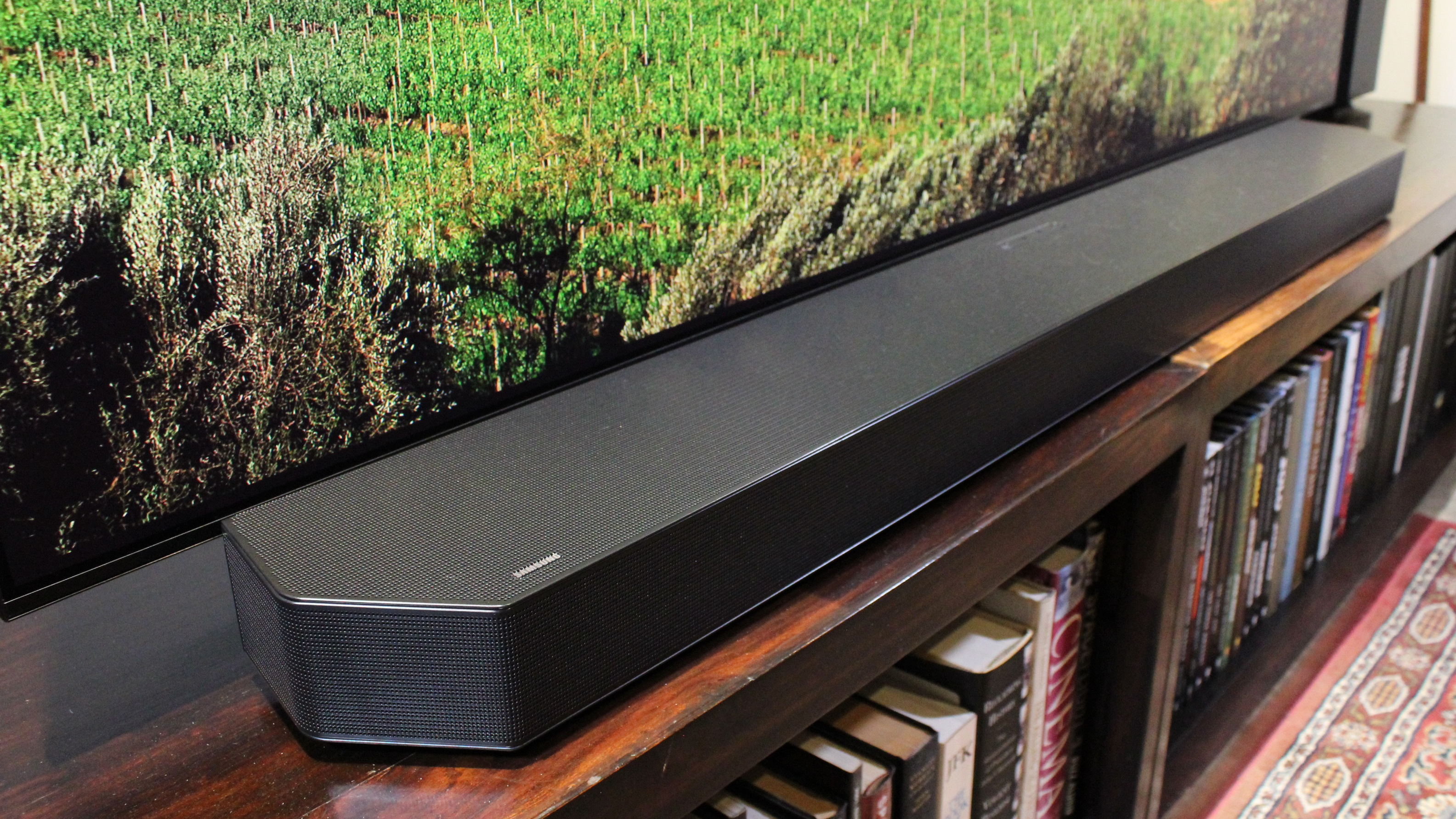

1. Samsung HW-Q990D
Our expert review:
Specifications
Reasons to buy
Reasons to avoid
The flagship and T3 2024 Award Winner for Best Soundbar delivers truly immersive audio (with Dolby Atmos compatibility) from a massive 22 speakers arrangement – so it really brings the cinema experience home. It also features Q Symphony compatibility, so pair it with a Samsung TV specifically and it will sync with the TV's speakers in perfectly balanced harmony – creating extra height and a more believable sound deliver to match what's happening on screen.
The Q990D comprises a soundbar that's the right size for TVs of 55 inches and up, a subwoofer, and two small rear speaker units, all of which communicate wirelessly in what's called a 11.1.4 channel configuration (that's 11 main channels for front/left/right/sides, one central channel for bass, and 4 upfiring height channels to deliver overhead sound). You'll need the space to lay all these out, of course, so it's not one for those who don't have the capacity – and it's a loud system (600W total), so you might not want any neighbours either!
Where this model levels up compared to its also excellent HW-Q990C predecessor is in adding HDMI 2.1 passthrough for next-gen consoles and compatible devices with 4K at 120fps. However, if you don't need that, then save yourself some cash. It's also worth pointing out the 2025 model, the HW-Q990F, which is identical to the 'D' model (there is no 'E') except the included subwoofer is far smaller for convenience.
As said in our Q990D review, though, this is a "peerless soundbar system", especially for those wanting three-dimensional audio decoding, as it "delivers Dolby Atmos and DTS:X with incredible immersion and plenty of cinematic flair". It's an impressive surround sound experience and clearly the best soundbar for Samsung TVs – if you can afford it, have the space and pine for perfect home cinema audio.
Best budget soundbar for Samsung TVs
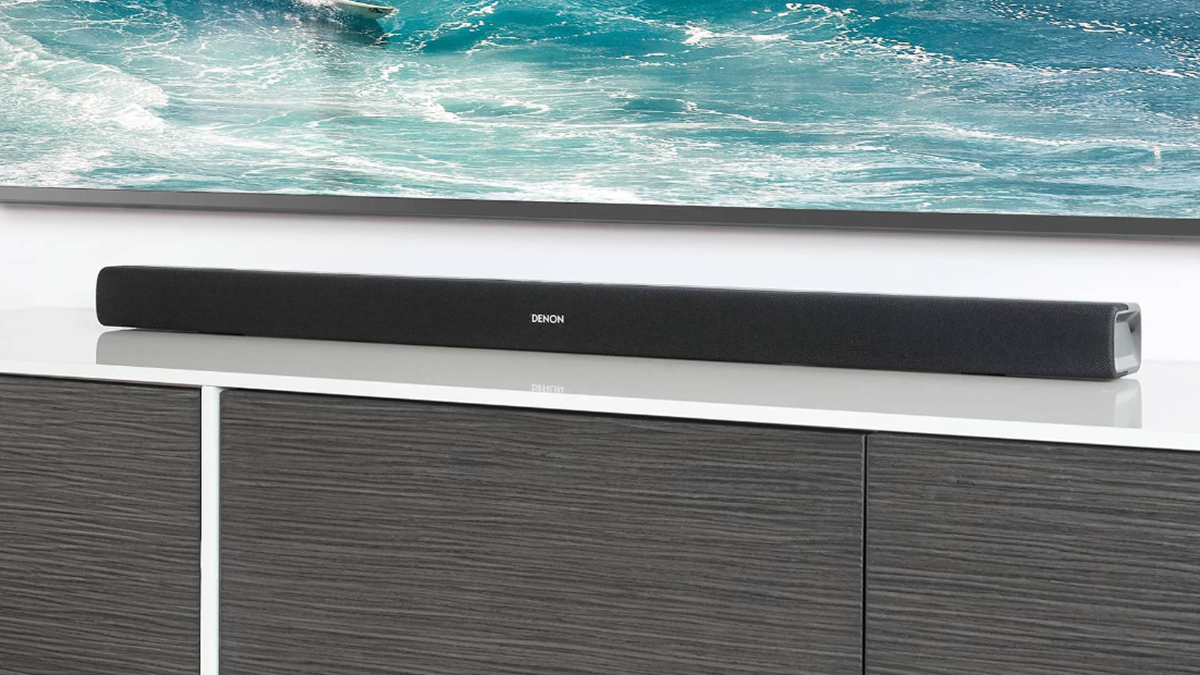

2. Denon DHT-S316
Our expert review:
Specifications
Reasons to buy
Reasons to avoid
As you can tell from our Denon DHT-S316 review, this is a budget soundbar with a lot to give: it's going to do the primary job of a soundbar, which is to push out audio of significantly superior quality than your TV's built-in speakers can manage, even if it does leave out several more advanced features in order to keep the overall price down – namely there's no three-dimensional audio decoding (Dolby Atmos being a clear absence) and no eARC for HDMI audio passthrough.
But if those lackings don't matter to you because you're seeking a super-affordable option then it's a great option for the decent sound quality it offers. You also know you're getting a good fit and finish from your soundbar when the Denon name is attached – and that's certainly true when it comes to the DHT-S316.
What really makes this a great buy, though, is the price. Considering you get both a main soundbar and a subwoofer included in the package, you really are making sure you get the most from your money if you need an added injection of bass for your Samsung TV. The low-end, mids, and highs are all catered for in a single system, and the speakers are able to get up to a substantial level of volume as well.
As mentioned in our Denon review, however, another "favourite small and affordable soundbar is Yamaha’s great little SR-C20A", which is a great single-box solution without the subwoofer if you don't need one. "You shouldn’t ignore the Sonos Ray, either", which is another "confident and convincing" single-box solution option if you don't want a subwoofer to contend with.
Best soundbar for Samsung TVs for most people
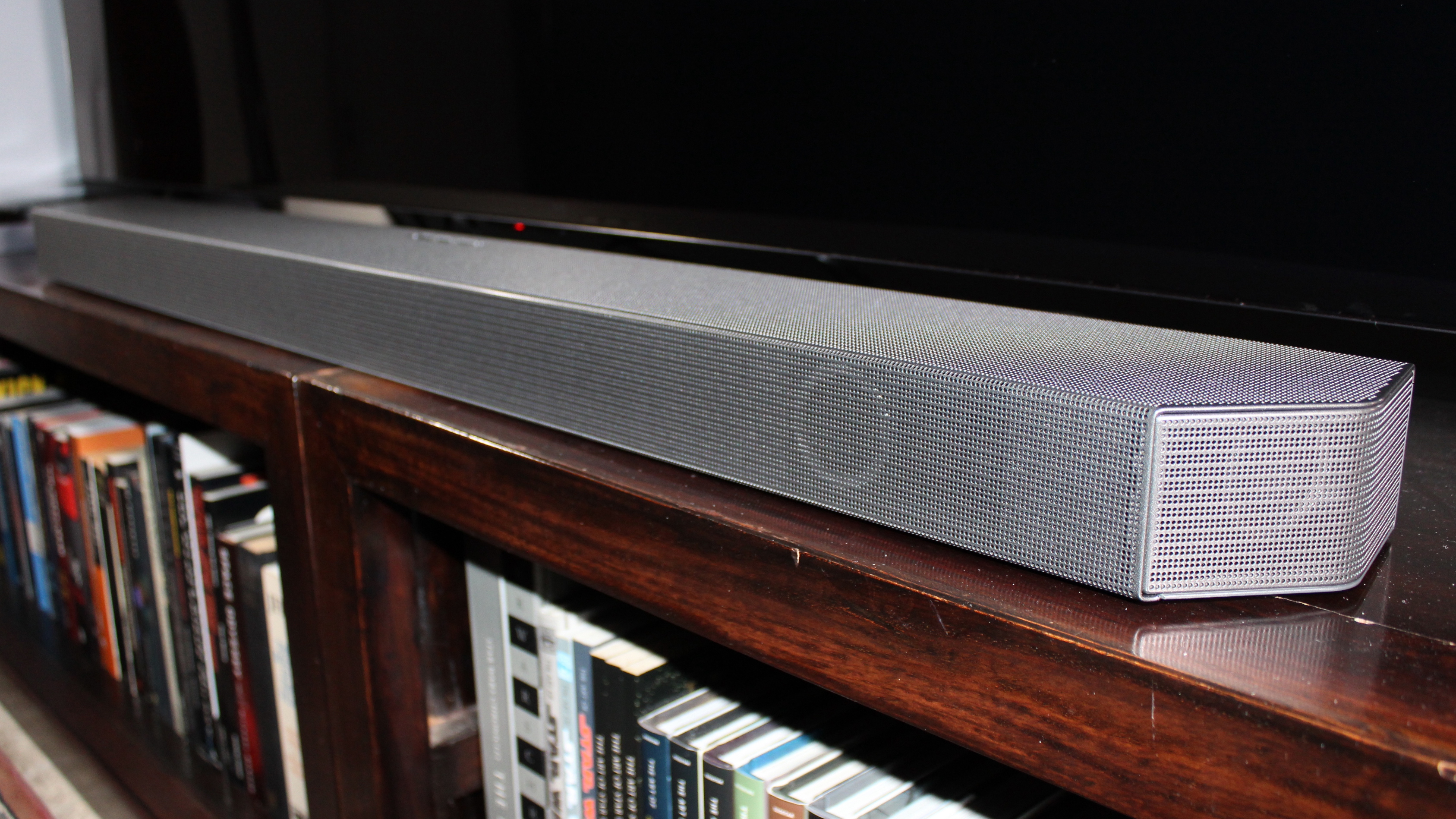

3. Samsung HW-Q800B
Our expert review:
Specifications
Reasons to buy
Reasons to avoid
If you want something compact that still has a big sound, wide dynamic range, and caters for Dolby Atmos and DTS X three-dimensional audio output, then the Samsung HW-Q800B is an ideal choice. It's a little older than the current 'C' (2023) and 'D' (2024) model equivalents – so it balances out features to price in the perfect ratio.
It's a 5.1.2-channel soundbar, meaning you get five outputs to cater for the front centre, left/right and sides, a bass centre channel, and two upfiring speakers on the soundbar for added height for great Dolby Atmos/DTS X. You'll note that's less than the top-end Q990D, however, which will deliver an even more immersive experience from its additional channels and rear speakers – but you'll have to pay a lot more for that. As the Q800B also works with Samsung's Q Symphony, recent Samsung TVs will use their built-in speakers to further add to the height channels.
The Q800B also has an HDMI input, as well as an HDMI connection to your TV, so if you have an Atmos-enabled external box – such as a Blu-ray player or Apple TV box – you can plug that straight into the soundbar and you'll get real Dolby Atmos sound even if your TV doesn't support it. It's not HDMI 2.1 like the Q990D though, which next-gen gamers seeking 4K at 120Hz refresh rate may want.
Read our full Samsung Q800B review for more insight, which concludes that this "well-appointed and highly capable soundbar is sure to please fans looking for a big, cinematic delivery. The subwoofer is excellent, although some tweaking may be required to ensure its bass doesn't over-power the rest of the system". This is a great soundbar that's ideal for TVs of 50-inches and up.
Best Sonos option
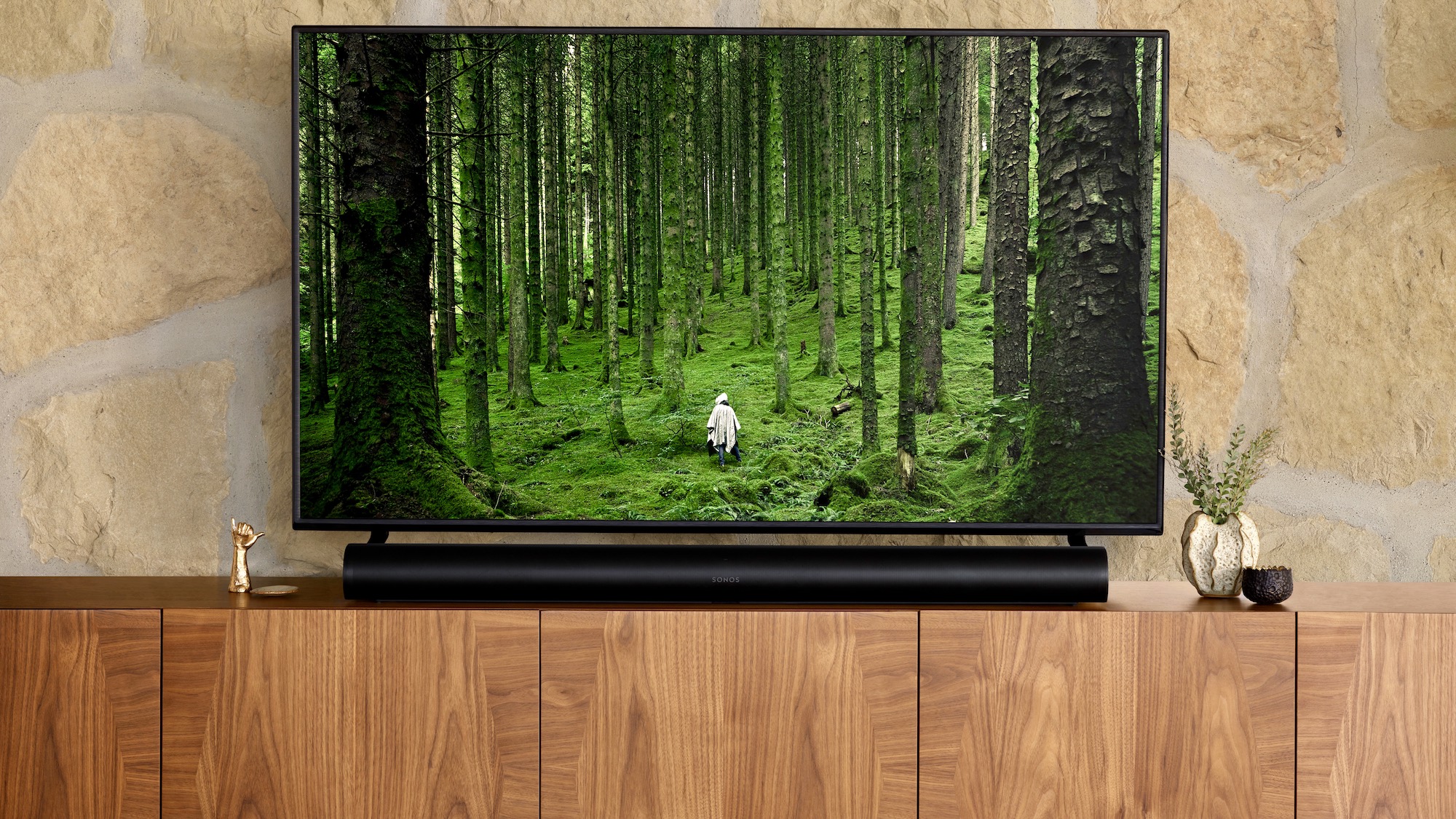

4. Sonos Arc
Our expert review:
Specifications
Reasons to buy
Reasons to avoid
The Sonos Arc is a Dolby Atmos soundbar with 11 drivers for projecting sound upwards as well as out for three-dimensional immersive sound quality. As a single-box soundbar, it's not able to fake sound truly coming from all around you, but instead it creates a clear sense of the sound filling the space in front of you. The Arc Ultra has now launched, too, and it's even better – but we still recommend the original Arc, while stocks last, as the Ultra doesn't add an HDMI port.
The sound quality is simply fantastic, though, no matter whether you're watching movies or listening to music (it's also compatible with Sonos' multi-room system, with streaming using the Sonos app or via Apple AirPlay 2) – and everything is finely balanced and beautifully smooth. Bass response is good from the 'bar itself, but you can add a Sonos Sub or Sonos Sub Mini at a later stage if you wish, which is a great upgrade option (although a little on the pricey side).
However: the Arc has only one HDMI port, with no passthrough offered, so you'll lose an HDMI port from your TV when connecting it. If your TV does not decode or pass through Atmos then you won't be able to make use of what it can do anyhow. This is rather frustrating, and feels oddly cheap for a premium soundbar, which is something we expect to see rectified for any follow-up solution in the near future. It's a good thing the audio quality is so good that our full Sonos Arc review review still rates it as one of the best soundbar buys, provided it's a good fit with your Samsung TV.
Best adaptable soundbar for Samsung TVs
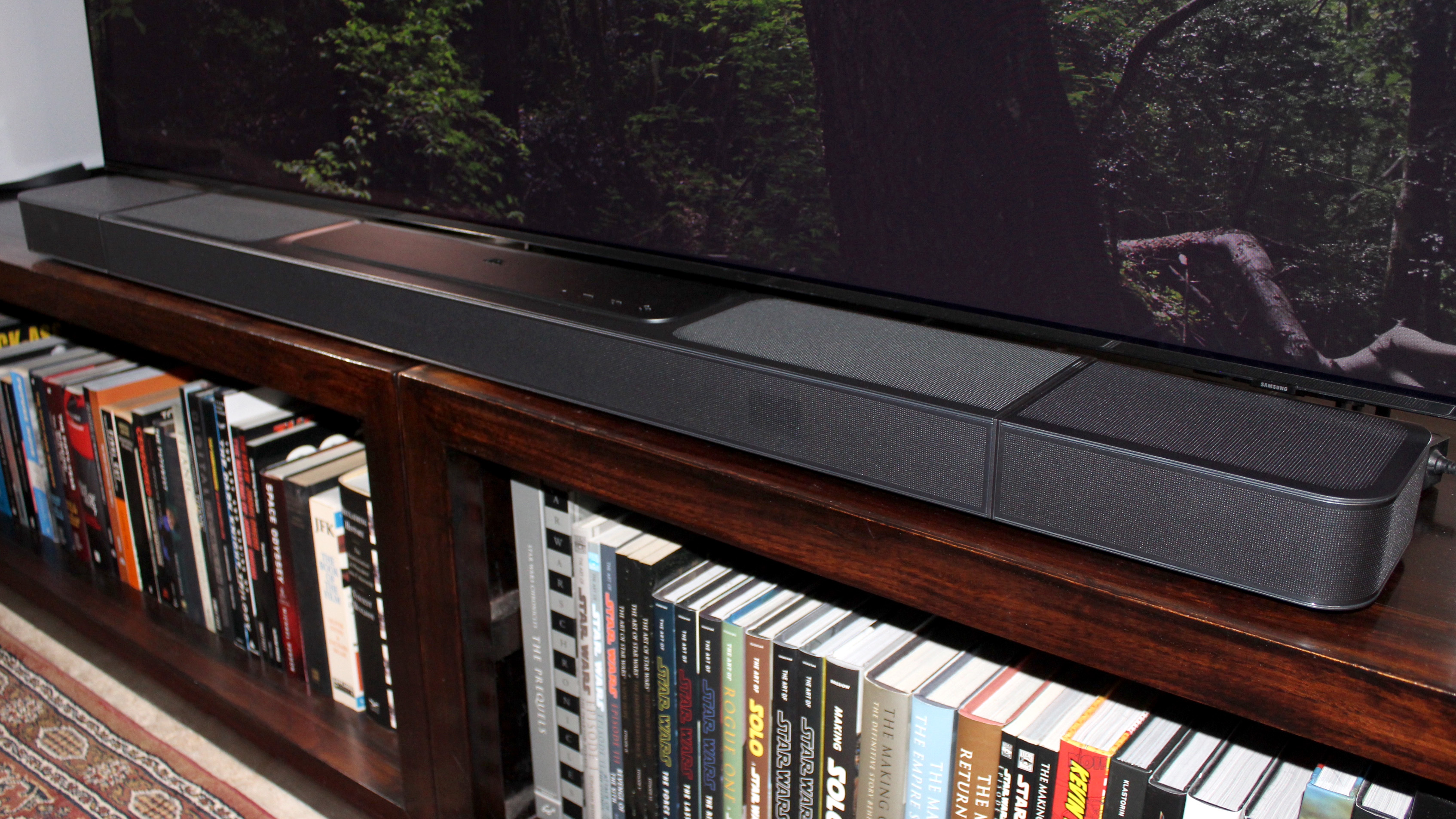

5. JBL Bar 1300
Our expert review:
Specifications
Reasons to buy
Reasons to avoid
While most soundbars on this list are either a single box, a soundbar and subwoofer duo, or a more considerable surround sound system with rear speakers, the JBL Bar 1300 takes a different path: that's because the ends of this soundbar remove to act as rear speakers, as and when you want them, so they needn't always be set up. That saves you the trailing wires from plugs, as per the top-end Samsung Q990D, for example – so is a great space-saving solution.
It's brilliant for adaptability, of course, but there's plenty more on the Bar 1300's feature set that appeals too. A trio of HDMI inputs, plus an HDMI eARC port mean that you're widely covered for connections. Sadly, however, you can't passthrough 4K/120Hz content or variable refresh rate (VRR), so gamers who demand that may prefer Samsung's Q990D option.
As said in our JBL Bar 1300 review: this feature-packed soundbar "delivers Dolby Atmos and DTS X object-based sound with cinematic scale and plenty of bass," so if you're into three-dimensional audio decoding this is a great option – which you can make more dynamic by moving those detachable speakers. However, without the proprietary Q-Symphony feature here, this JBL can't sync with a Samsung TV's speakers in addition, so is less tuned specifically for Samsung sets. It's still a great alternative though.
Best small soundbar for smaller Samsung TVs


6. Yamaha SR-C20A
Our expert review:
Specifications
Reasons to buy
Reasons to avoid
The Yamaha SR-C20A sits near the bottom of Yamaha's rather expansive soundbar lineup, but that doesn't mean it's not capable of great things. Given its rather affordable price, it's a hugely impressive performer, even if it is more limited on specs, out of necessity at this lower price point.
There's only 100W of power available to the three drivers (two front-facing, one upward-pointing), for example. There's no spare HDMI ports whatsoever, with TV connectivity handled either by its single HDMI eARC socket or one of two digital optical inputs. That's fine though, and will work a treat for desktop gamers or those with smaller Samsung TVs.
But if there's one thing Yamaha knows, it's getting superb sound out of very little. This soundbar is small but it has definite width (and even a little height). It's compact, but you get maximum detail at each end of the frequency range. It looks understated, but packs a punch when it needs to.
In our full Yamaha SR-C20A review, we say "it looks like a scale model of a soundbar" – indeed this is ideal with small Samsung TVs, including down to 32 inches. It does what a soundbar is supposed to do: add more oomph to soundtracks while making dialogue and detail clearer, and nothing does it better for this price. You do forego true surround sound or any Dolby Atmos, but if that's a want then you'll have to pay more for the alternatives also listed on this page – the Denon DHT-S316 being one good option.
Honourable mentions
Sonos Arc Ultra: The step up over the 'standard' Arc, the Ultra version sounds even better thanks to bigger sound. It'll cost you more, though, and there's still no HDMI passthrough slot.
Harman Kardon Citation Multibeam 1100: A great alternative to the Sonos, if you can find it cheaply, the Harman Kardon can cater for HDMI passthrough (although not for 120Hz feeds).
Sonos Beam (Gen 2): If the Sonos Arc (or Ultra) is too big for your needs then this one-box solution is ideal – and no need for a subwoofer or any other speakers eating up space.
Amazon Fire TV Soundbar: If every penny counts and you want a cheap buy, then Amazon's offering is certainly budget – and while it doesn't sound amazing, it's better than a small TV's sound.
How to choose the best soundbar for Samsung TVs
The below 'FAQs' panel should help inform which soundbar you're looking based on common questions and technologies – whether that's a small single-box, a mid-tier soundbar and subwoofer, or an all-out surround setup with separate speakers.
Pricing
First and foremost, however, you should think about how much money you can spend on your new soundbar. Soundbars can be bought for under £100, but they're going to be designed for a desktop setup, such as a PC with monitor. The really high-end soundbars, meanwhile, can cost well over £1,000 – and that'll be worth it if you have the space, are seeking more immersive sound, and frankly if you can even play at loud levels without causing neighbourly disturbances!
Design
Something else to consider is the design of your new soundbar. Samsung TVs are known for their sleek builds, so it's definitely worth looking for a soundbar that complements your TV's looks. You'll want to avoid reflective top panels (a sometime Bose issue) distracting from your TV watching. You'll want a remote included so you can adjust lighting and sound modes on the fly. You'll also want something that just looks right with your Samsung TV – and spending that bit extra does tend to mean a finer finish, with metal grilles and visually more appealing surfaces.
Q-Symphony surround
In addition, can the TV match with a Samsung soundbar specifically to utilise Q Symphony technology? That's when the soundbar uses the TV's speakers, tuned specifically for output, for even more height. Only Samsung's own soundbars offer this specific feature, so if you pick any other brand – great and commendable as they may be – this is one feature you'll forego. That's not a seal-the-deal must-have, though, as plenty of competitors are able to upfire sound very well to create a believable match to the picture.
Size & Height
If you choose to place your soundbar in front of your TV, make sure it isn't so tall that it obscures the infrared light from your remote control, or even that it edges into the picture – some TVs stand higher from the surface than others! This is something you'll need to check by analysing the dimensions, so don't be slack and not get that tape measure out to confirm. Also consider the size of your Samsung TV and the size of the soundbar you want to buy – you don't want a 'bar that's sticking out beyond the edges of your TV (or your TV table).
Connections
When it comes to connectivity, as highlighted above in the 'key specs' section, be sure to look into the type of wired connections your soundbar offers. HDMI is the easiest way to hook your soundbar up to your TV, with most soundbars delivering on 4K/60Hz passthrough – perfectly good enough for most people. If you demand HDMI 2.1, it's a rarer appearance, and only worth paying for if you're looking for future-proof or are a gamer where that extra refresh rate pass is a must-have – it'll up your spend, so be sure you need it.
On some older TVs it's a pain to lose an HDMI port, because it might be one of your only 4K-capable ports. That's why you might also wish to pay more for a soundbar with additional HDMI ports able to passthrough inputs. It'll add to your spend, sure, but for those with lots of AV gear it's worthwhile.
Spatial Audio
Another want is for three-dimensional audio decoding. Many soundbars can cater for Dolby Atmos or DTS X decoding, which means relevant source material will deliver more width, height and surround channels for enhanced immersion. The more speakers you have, and the more upfiring outputs, the more likely this will deliver at its best – so if 3D audio if your biggest aim, be prepared to pay that extra.
How we test the best soundbars for Samsung TVs
Our dedicated How We Test page provides an overview for T3's testing process. When it comes to the best soundbars for Samsung TVs, however, there's a whole variety of factors that inform our verdict and star-rating per product.
As per the 'how to choose' section above, the specification is a major factor that may prompt a purchase decision. We'll ensure to note the number of units in a package, the speaker arrangement, whether the soundbar can handle three-dimensional audio processing, HDMI passthrough, and how that fits contextually against other similar-priced soundbars.
Not that our testing is about listing specifications, as useful as that is, but we'll unbox, install and setup a new soundbar just as if we had purchased it ourselves. That's key to informing any design foibles, to assess the build quality, and other factors that can be easily overlooked – such as surface reflection from any lighting present.
After installing a soundbar, we'll use it for all manner of content. There's TV, streaming, and 4K Blu-ray via a current-gen console, in order to test the varying quality levels of audio input. Music, too, will be tested via Bluetooth and/or Wi-Fi as applicable to see how that differs.
Audio performance assessment is where our expertise comes into play: as the reviewers on this page (see the 'reviewer panel' below) has extensive experience in the audio industry, our attuned ears will know whether there's the right amount of bass, enough top-end bite, without being sibilant or flat. Context is key here: and with many dozens of soundbars tested over the years, we know how one product will sit compared to another, helping to recommend for different reasons.
Dolby Atmos and DTS X spatial audio are another area of test, where applicable, so we'll listen to how effective the audio processing is here. Often there's AI (artificial intelligence) modes in the very latest soundbars, designed to further enhance this, which we'll take on board in assessment.
We strive to be as consistent as possible in our testing, but as each of our expert voices, as collated into this guide, have different home setups that is one consideration. But we think that's a positive – as we test in people's homes, not a rigid studio setup, it better reflects the experience that you, our readers, will also experience with these soundbar products.
FAQs
The term 'soundbar' is a catchall term, but there's a whole lot to consider when buying one. Here's a summary of the most important points that may affect your buying decision.
Single, subwoofer, or separates?
1. Some soundbars are single-box solutions, so that's all you have to worry about plugging in. These won't necessarily provide as much low-end bass response, but can be well-suited to smaller TVs. Some examples, such as the Sonos Arc, are great single-box solutions with much bigger sound for larger TVs.
2. Many soundbar packages come with a separate subwoofer, which you'll also need to plug in – but wireless connectivity is now the norm, so it's only a wall socket you'll need. Subwoofers vary in size and bass prominence, but the difference they'll make for movie night is untouchable for bass.
3. Many soundbars venture over into the 'surround systems' realm, really, with soundbar, sub and separate speakers provided. Samsung's HW-Q990D, for example, has rear-firing speakers – which are another consideration for plugging in.
3D audio: Dolby Atmos and DTS X
While many soundbars don't supply surround sound and stick to stereo, many are now capable in delivering three-dimensional audio – irrelevant of how many speakers are involved.
The two main formats, Dolby Atmos and DTS X, can create side and overhead sound immersion, using psychoacoustic processing, giving the impression of a wider and taller soundfield.
If you have chosen a soundbar with rear-firing speakers included, for example, you'll get an even more immersive experience, with sound able to cover a full hemisphere of space around you and overhead – making it closer to a home cinema feeling. That's why these soundbars are pricier.
Connectivity and Passthrough
The most basic soundbars only have an optical input, which you'll need to cable directly from your TV.
Many modern soundbars have an HDMI port, however, with the latest eARC (that's enhanced audio-return channel), making for a simple TV HMDI port to soundbar connection.
More advanced soundbars will have additional HDMI ports, allowing for additional products to be plugged in – which is a great way to 'expand' the typical four slots on the back of a TV – in a process called 'passthrough'. Do note, however, that you'll want the HDMI 2.1 standard to be able to pass on 4K at 120Hz refresh rate, which is the highest current gaming standard (HDMI 2.0 will cater for 4K, but at 60Hz instead).
To use your soundbar as a music-player, most soundbars also feature Bluetooth and/or Wi-Fi to stream music wirelessly – whether from your phone, tablet or whatever source. Some will also include microphones with support for Amazon Alexa or Google Assistant.
Reviewer panel
Follow T3.com on Google News to keep our latest news, insights, and features at the top of your feeds!

I've been reviewing soundbars and curating content from audio industry experts for over 12 years. From my first-hand knowledge to those expert voices (listed below with additional information regarding their extensive experience), you can be assured that the soundbar picks in this guide are the very best soundbars for Samsung TVs.

Simon is a freelance technology journalist and consultant, with particular emphasis on audio/video and home entertainment. Before writing for T3 he was editor of What Hi-Fi? – a highly reputable industry publication with independent testing facilities for AV products, such as soundbars.

Steve has been writing about audio and video products for over 10 years. He is a professional calibrator, with Level 2 certification with THX, the Imaging Science Foundation (ISF) and the Home Acoustics Alliance (HAA). He knows the ins and outs of AV gear, including the best soundbars.

John has been reviewing audio-visual gear for over 25 years, having originally worked on Home Cinema Choice magazine. He's a long-time contributor to Forbes and many other places – so if you've owned a soundbar in the last couple of decades, John has probably reviewed it.

Matt was the former T3 magazine editor and has a whole host of experience under his belt – including as T3's TV and AV Editor before Mike Lowe took over. Matt currently works for sister publication TechRadar as the boss of Entertainment – and in his over-10-years of experience has reviewed many soundbars.
Get all the latest news, reviews, deals and buying guides on gorgeous tech, home and active products from the T3 experts

Mike is T3's Tech Editor. He's been writing about consumer technology for 15 years and his beat covers phones – of which he's seen hundreds of handsets over the years – laptops, gaming, TV & audio, and more. There's little consumer tech he's not had a hand at trying, and with extensive commissioning and editing experience, he knows the industry inside out. As the former Reviews Editor at Pocket-lint for 10 years where he furthered his knowledge and expertise, whilst writing about literally thousands of products, he's also provided work for publications such as Wired, The Guardian, Metro, and more.

